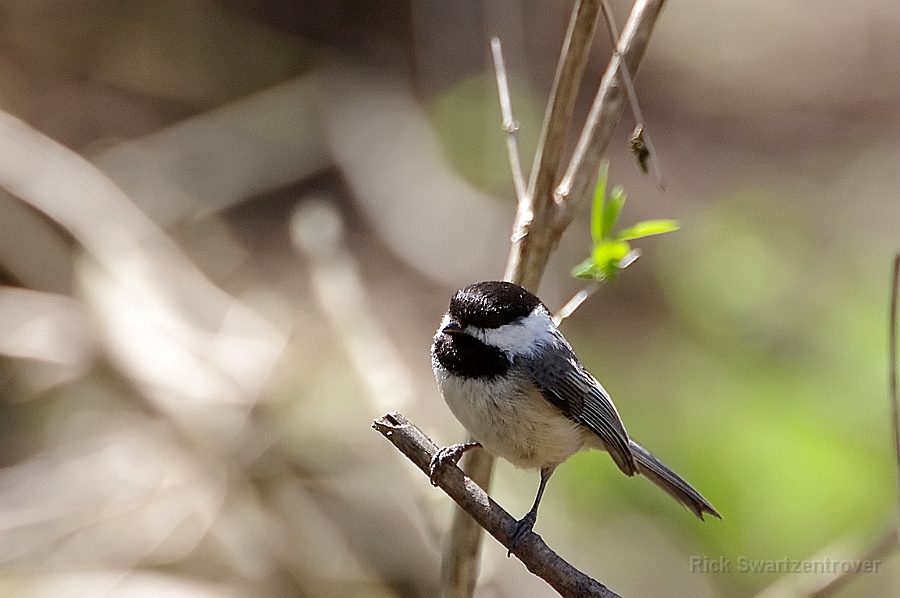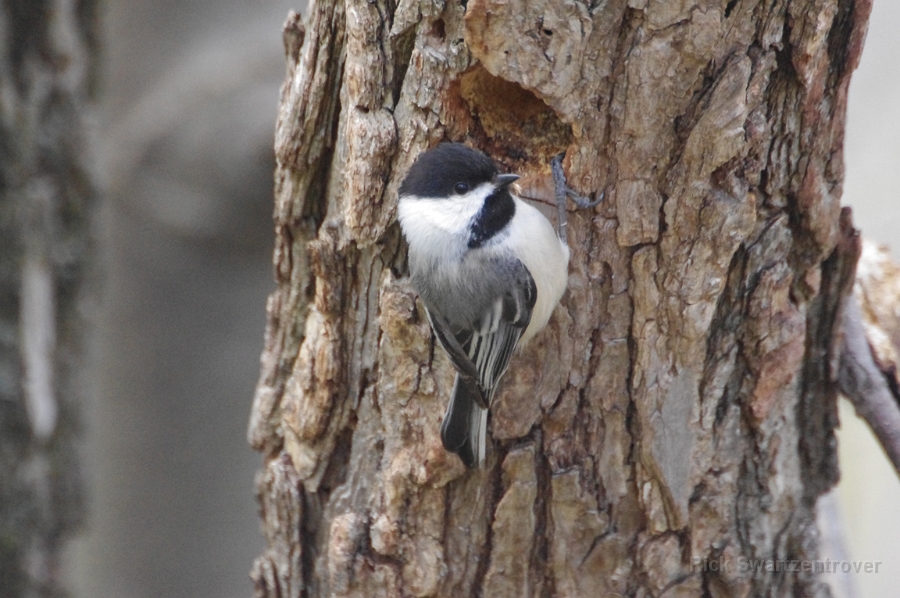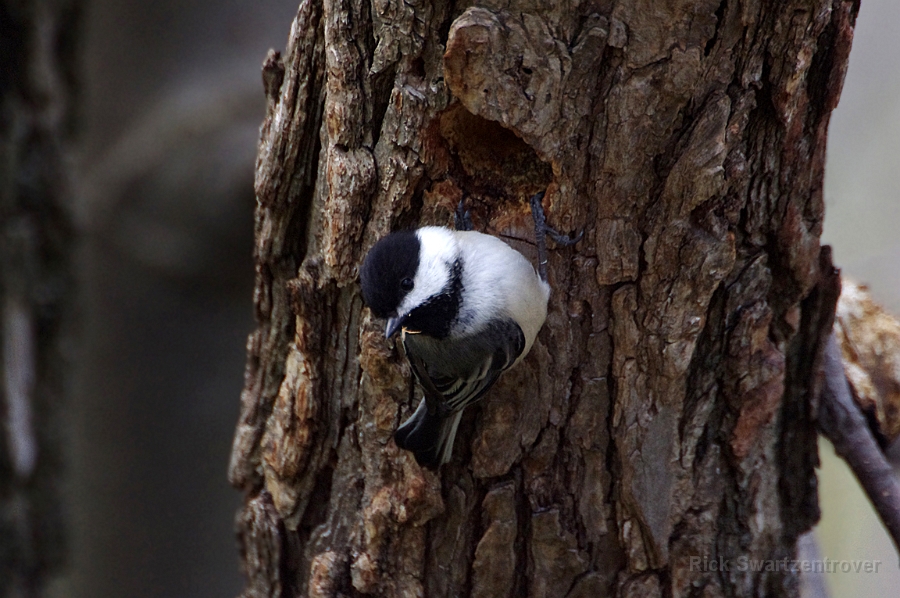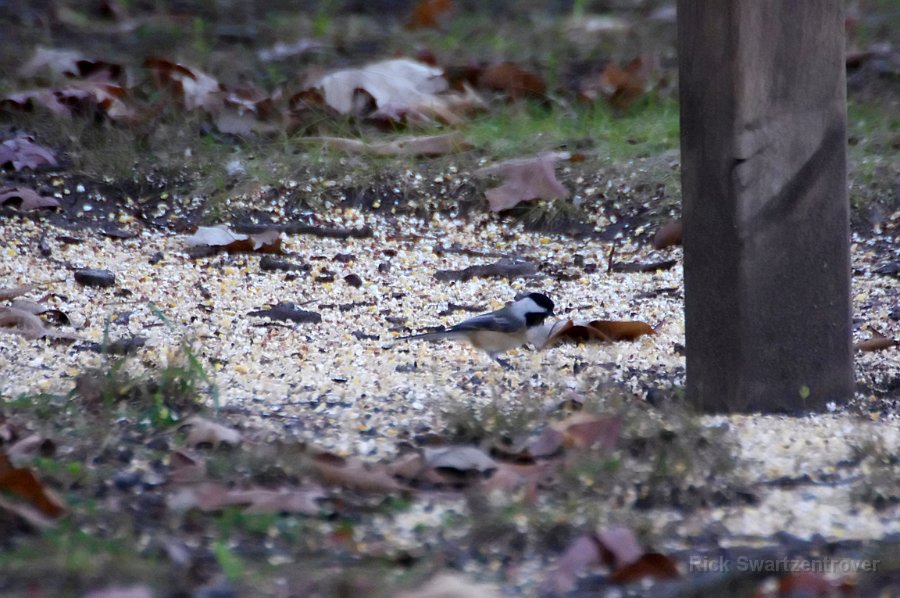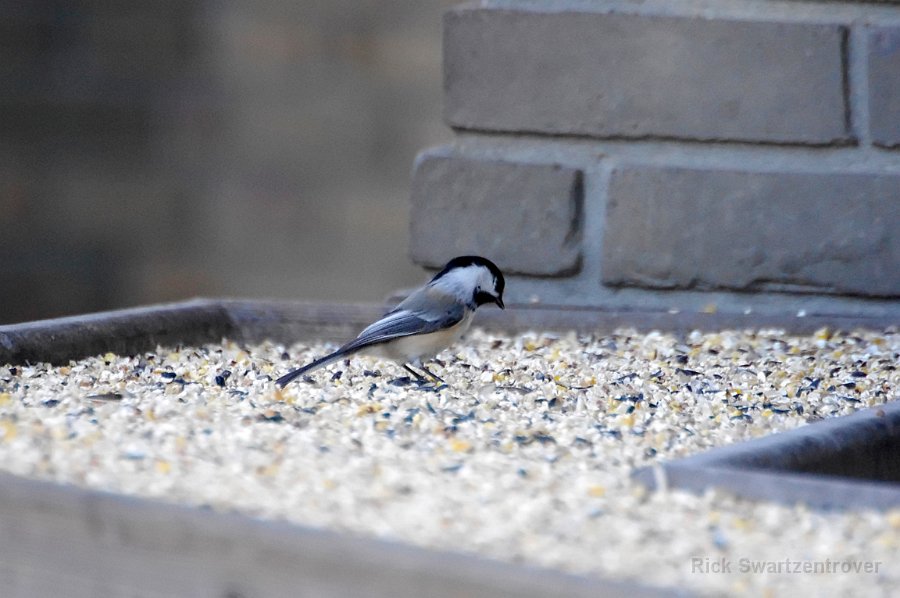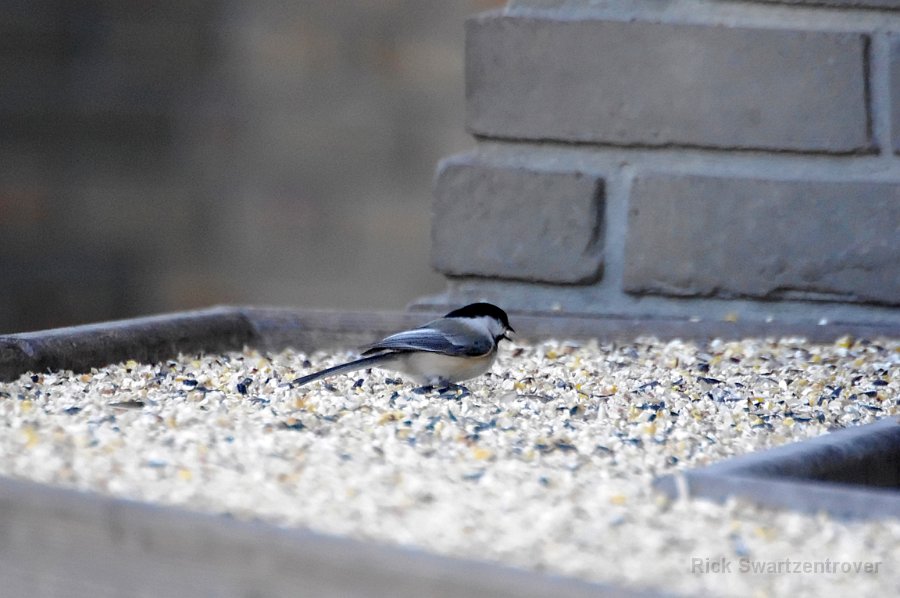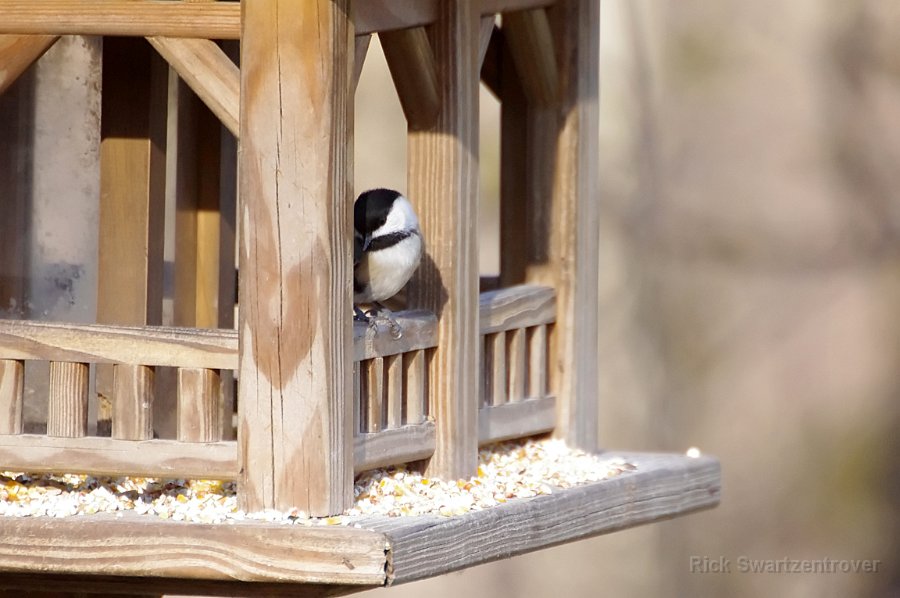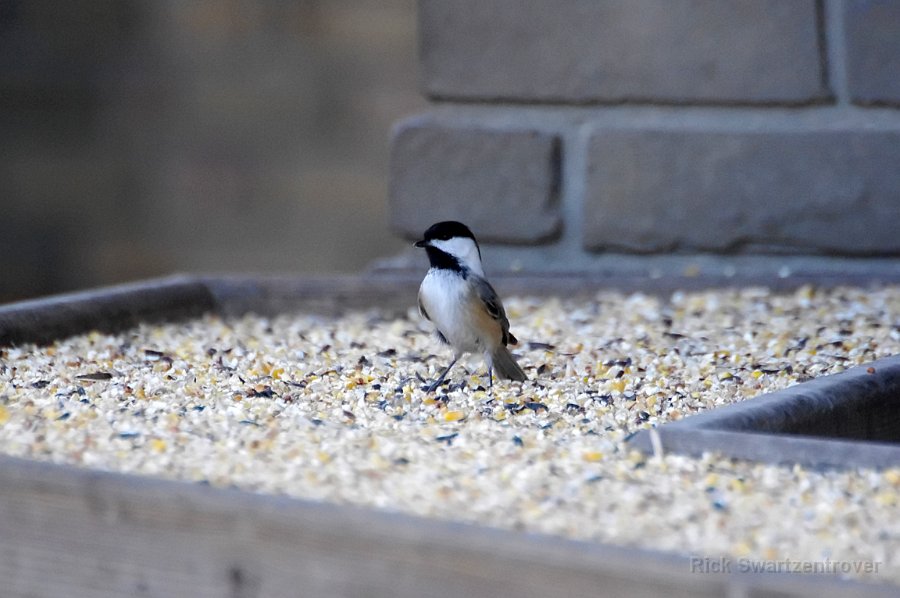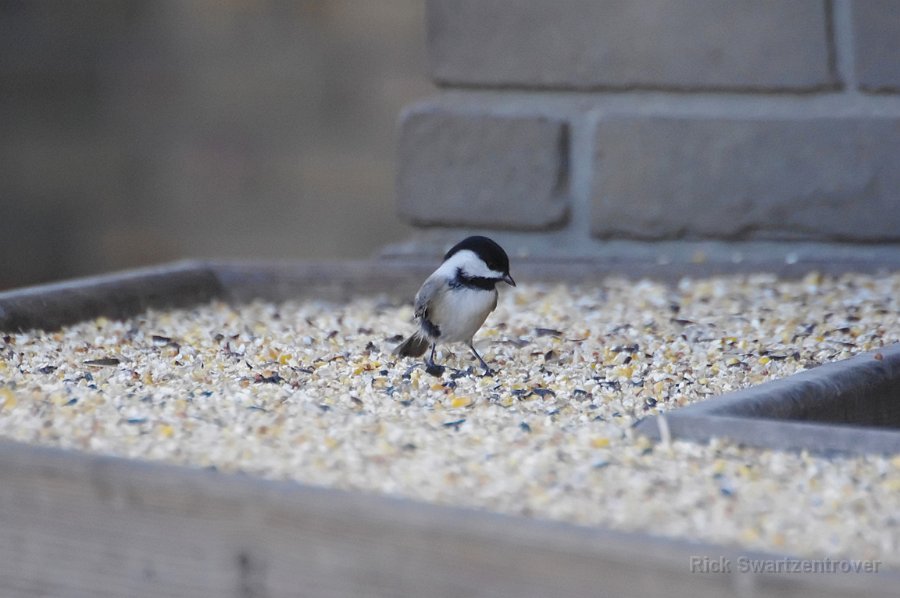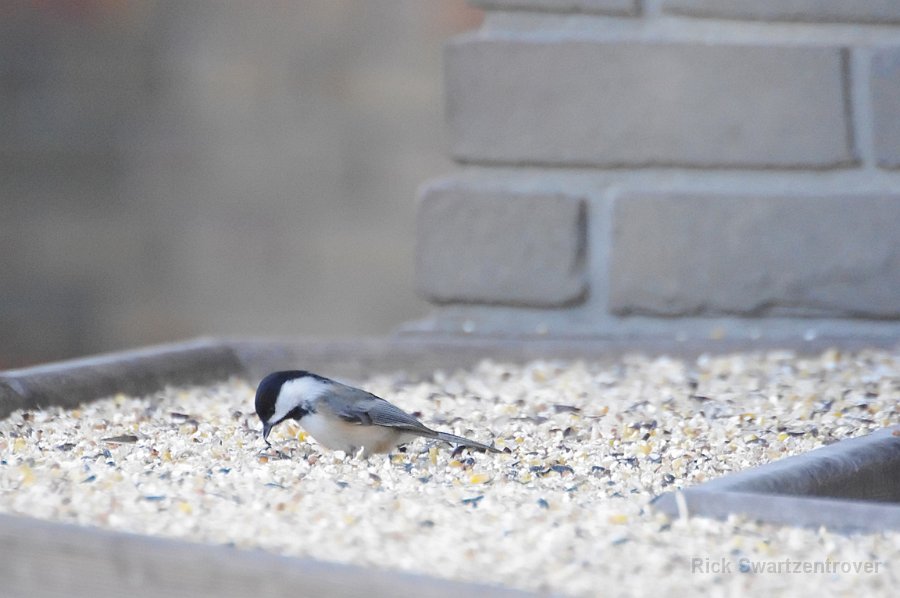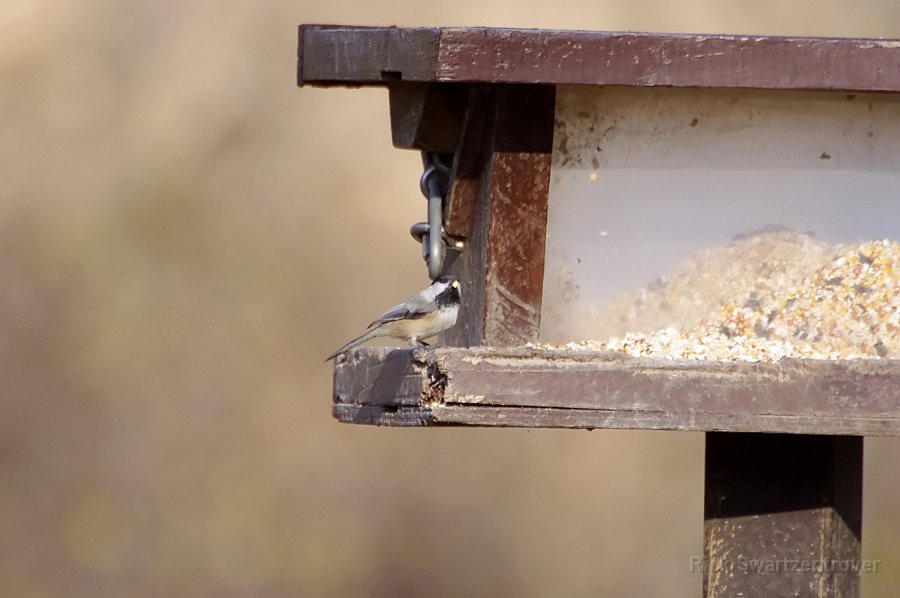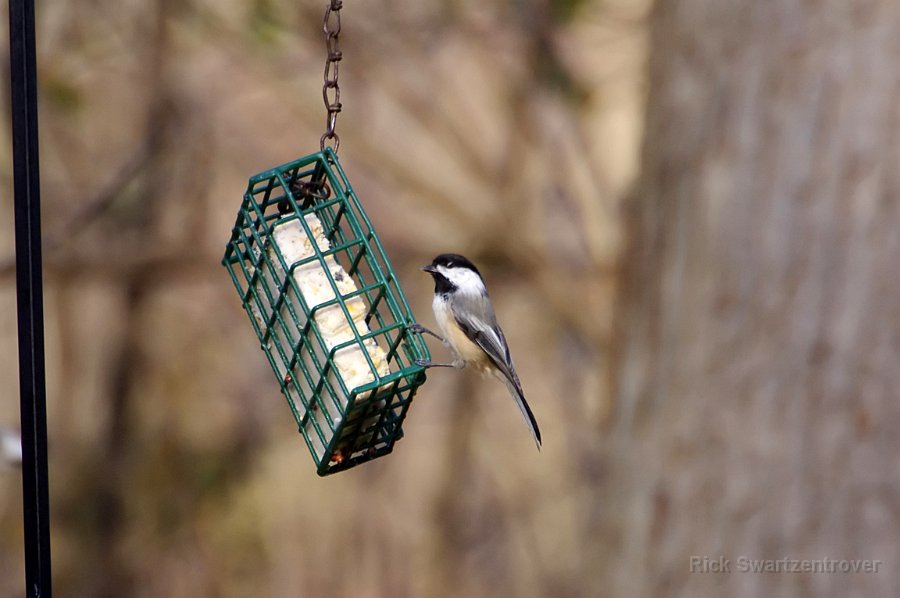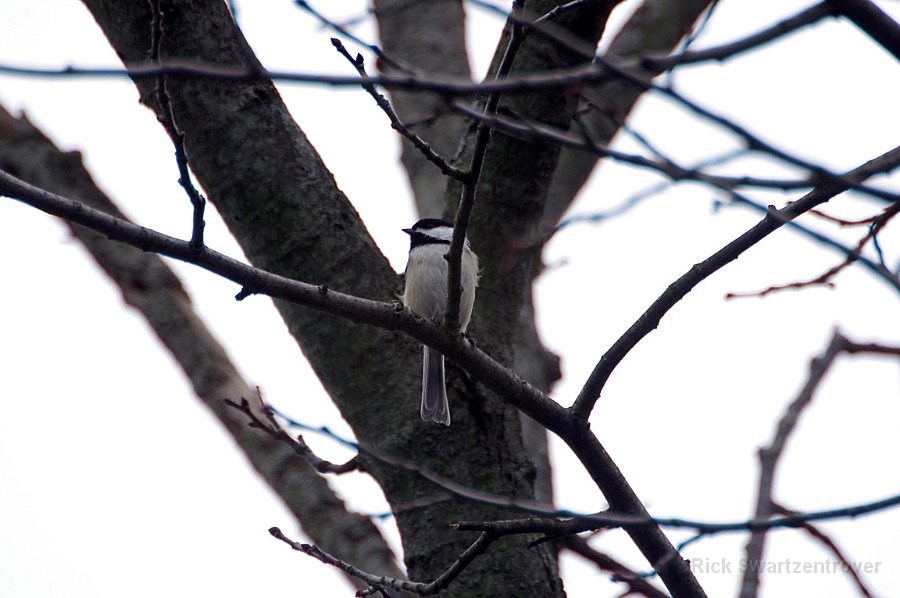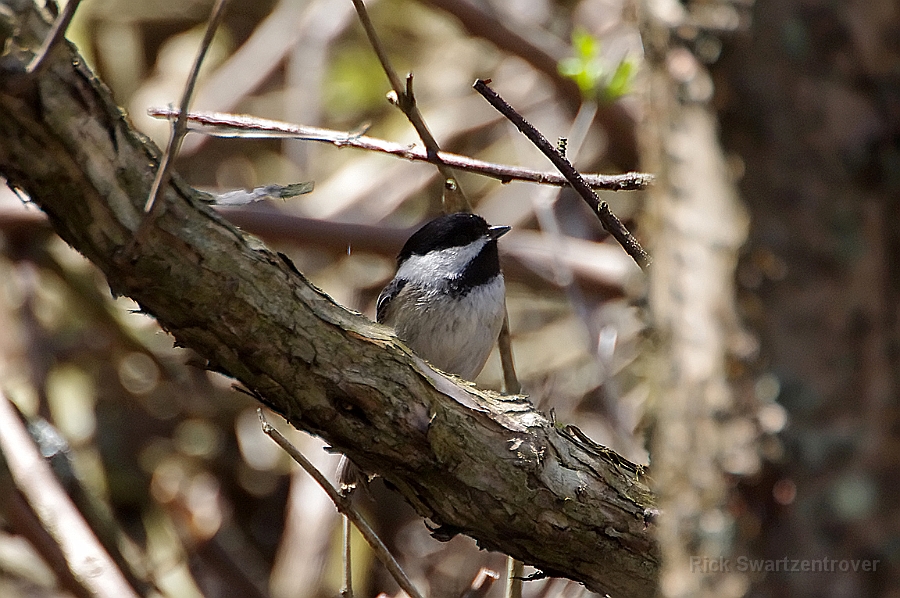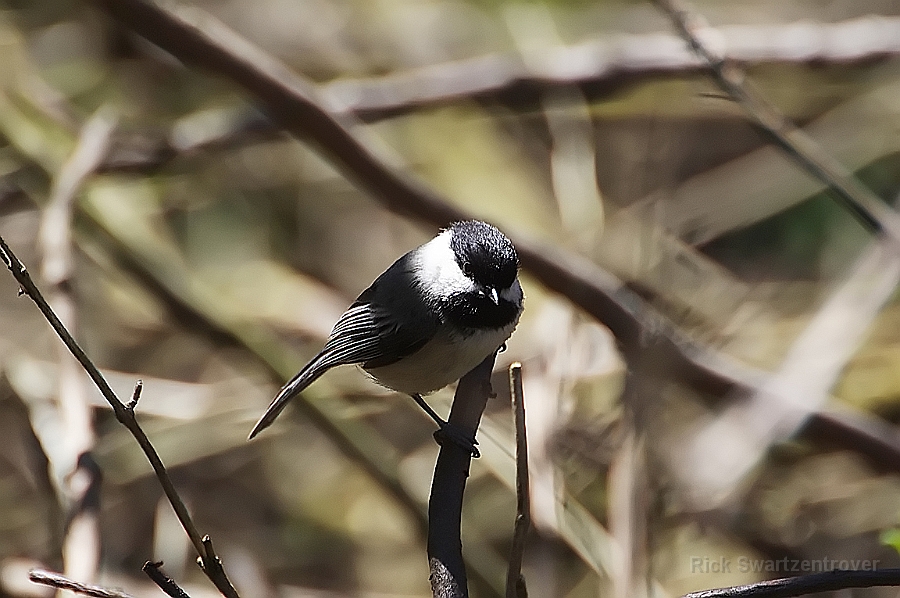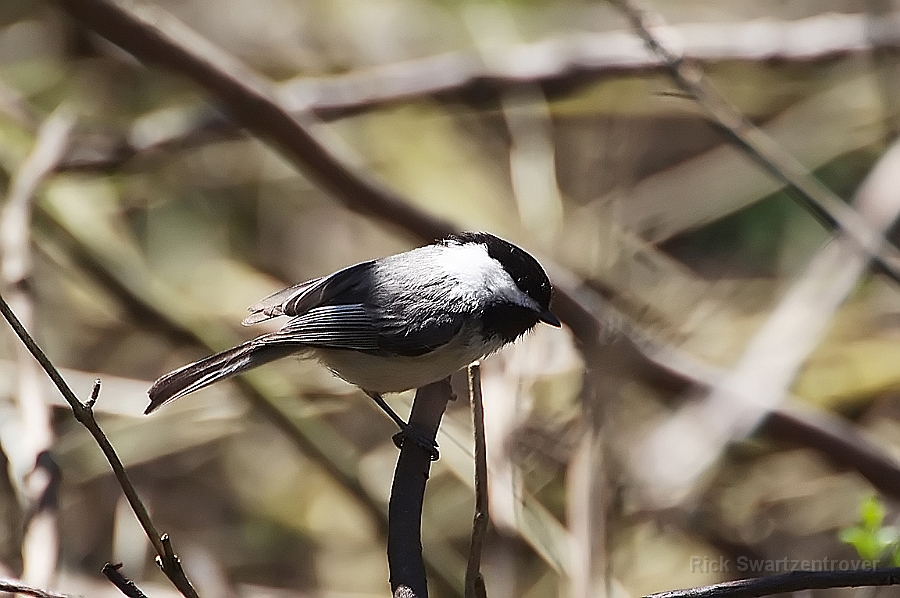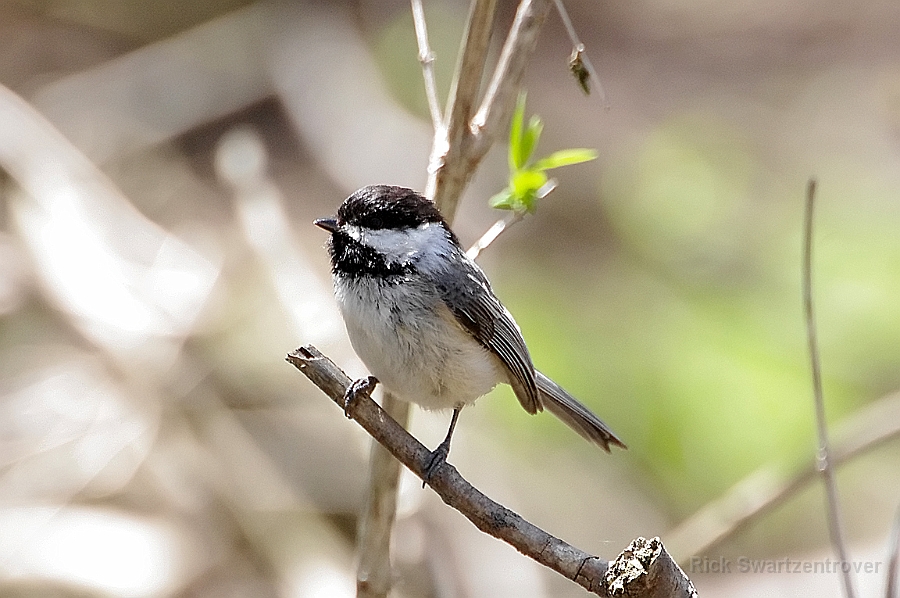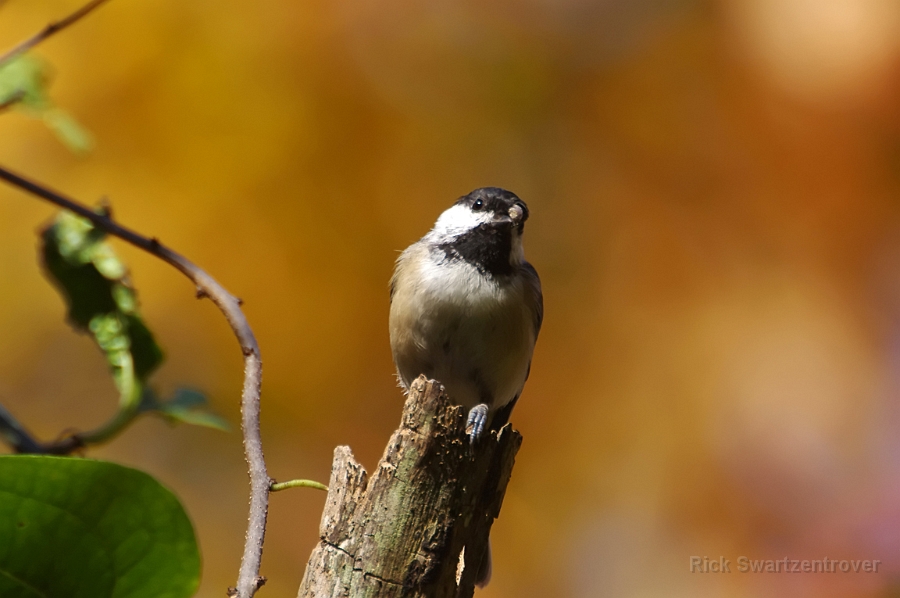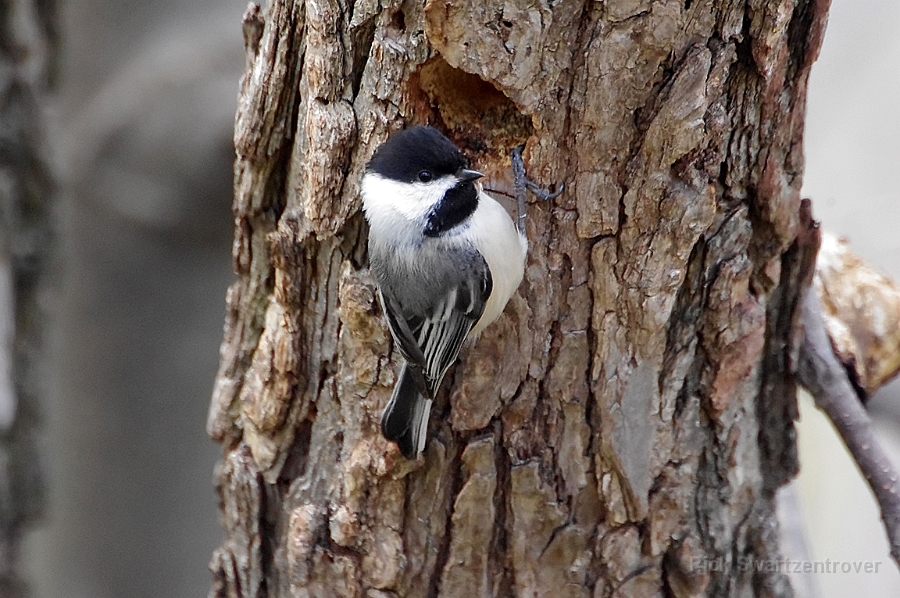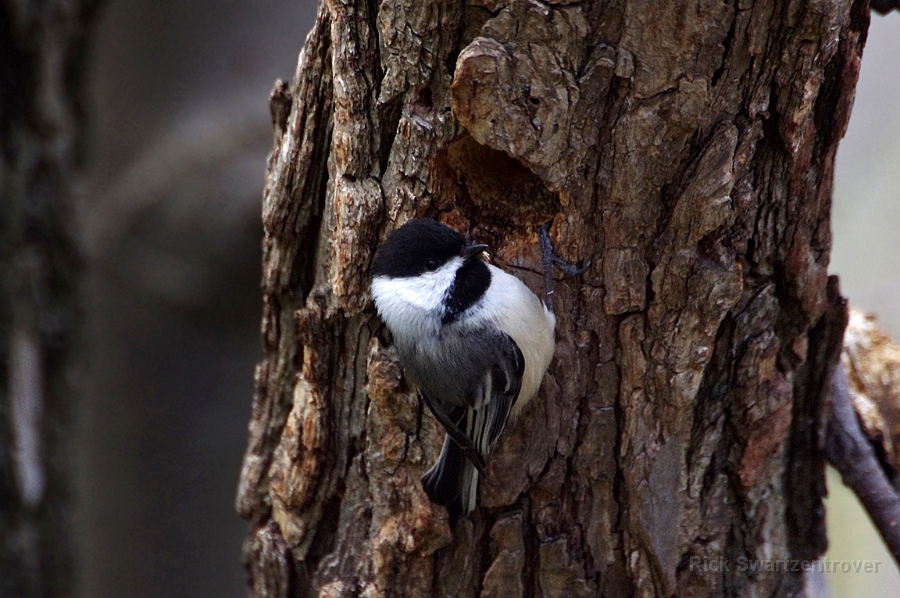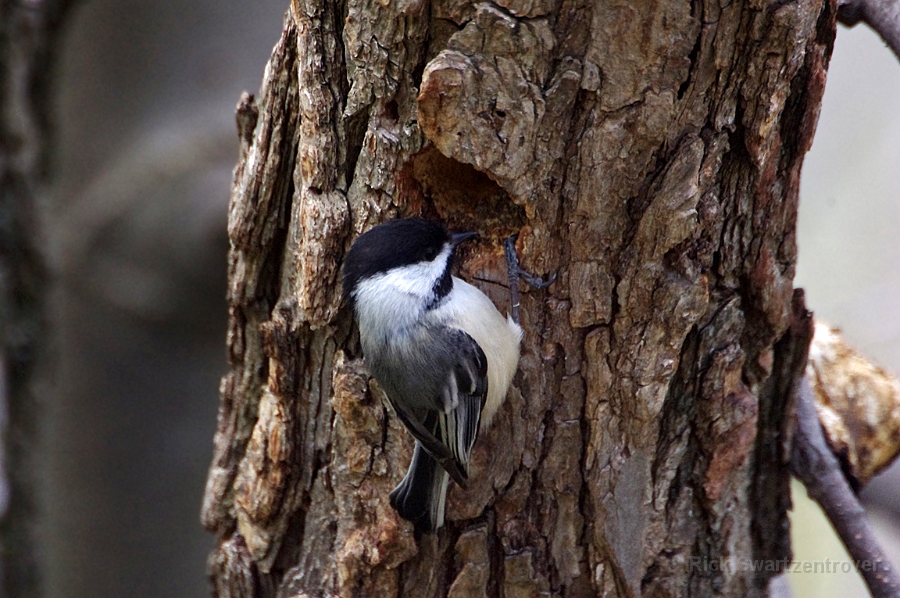|
|
|
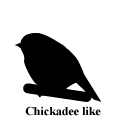 |
Black-Capped Chickadee
|
| Poecile atricapillus | |
A bird almost universally considered "cute" thanks to its oversized round head, tiny body, and curiosity about everything, including humans. The chickadee's black cap and bib; white cheeks; gray back, wings, and tail; and whitish underside with buffy sides are distinctive. Its habit of investigating people and everything else in its home territory, and quickness to discover bird feeders, make it one of the first birds most people learn.
Interesting Information
-
The Black-Capped Chickadee hides seeds and other food items to eat later. Each item is placed in a different spot and the chickadee can remember thousands of hiding places.
-
Every autumn Black-capped Chickadees allow brain neurons containing old information to die, replacing them with new neurons so they can adapt to changes in their social flocks and environment even with their tiny brains.
-
Chickadee calls are complex and language-like, communicating information on identity and recognition of other flocks as well as predator alarms and contact calls. The more dee notes in a chickadee-dee-dee call, the higher the threat level.
-
Winter flocks with chickadees serving as the nucleus contain mated chickadee pairs and nonbreeders, but generally not the offspring of the adult pairs within that flock. Other species that associate with chickadee flocks include nuthatches, woodpeckers, kinglets, creepers, warblers and vireos.
-
Most birds that associate with chickadee flocks respond to chickadee alarm calls, even when their own species doesn't have a similar alarm call.
-
There is a dominance hierarchy within flocks. Some birds are "winter floaters" that don't belong to a single flock - these individuals may have a different rank within each flock they spend time in.
-
Even when temperatures are far below zero, chickadees virtually always sleep in their own individual cavities. In rotten wood, they can excavate nesting and roosting holes entirely on their own.
-
Because small songbirds migrating through an unfamiliar area often associate with chickadee flocks, watching and listening for chickadee flocks during spring and fall can often alert birders to the presence of interesting migrants.
-
The oldest known wild chickadee lived to be 12 years and 5 months old.
Description
Adult Description
Size & Shape
This tiny bird has a short neck and large head, giving it a distinctive, rather spherical body shape. It also has a long, narrow tail and a short bill a bit thicker than a warbler's but thinner than a finch's.
-
Length Range: 14 cm (5.5 in)
-
Weight: 11 g (0.4 oz)
-
Size: Small (5 - 9 in)
Color Pattern
The cap and bib are black, the cheeks white, the back soft gray, the wing feathers gray edged with white, and the underparts soft buffy on the sides grading to white beneath. The cap extends down just beyond the black eyes, making the small eyes tricky to see.
Sex Differences
Sexes Similar
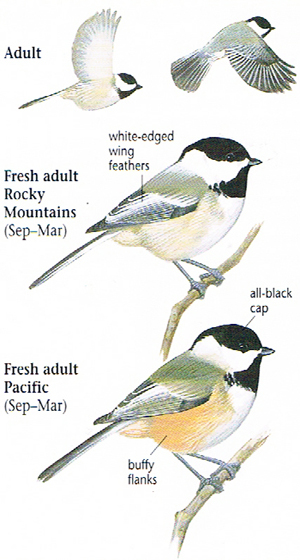
Photo taken from: The Sibley Field Guide by David Allen Sibley
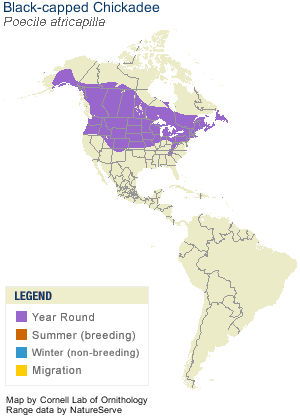
© 2003 Cornell Lab of Ornithology
|
Habitat |
|
Chickadees are found in deciduous and mixed forests, open woods, parks, willow thickets, cottonwood groves, and disturbed areas. |
|
Behavior |
|
Chickadees are active, acrobatic, curious, social birds that live in flocks, often associating with woodpeckers, nuthatches, warblers, vireos, and other small woodland species. They feed on insects and seeds, but seldom perch within several feet of one another while taking food or eating. Flocks have many calls with specific meanings, and they may contain some of the characteristics of human language. |
|
Food |
|
In winter Black-capped Chickadees eat about half seeds, berries, and other plant matter, and half animal food (insects, spiders, suet, and sometimes fat and bits of meat from frozen carcasses). In spring, summer, and fall, insects, spiders, and other animal food make up 80-90 percent of their diet. At feeders they take mostly sunflower seeds, peanuts, suet, peanut butter, and mealworms. They peck a hole in the shell, and then chip out and eat tiny bits of seed while expanding the hole. |
Taxonomy
| Kingdom: | Animalia |
| Phylum: | Chordata |
| Subphylum: | Vertebrata |
| Class: | Aves |
| Order: | Passeriformes |
| Family: | Paridae |
| Genus: | Poecile |
| Species: | Poecile atricapillus |
| Subspecies: | Poecile atricapillus atricapillus |
| Poecile atricapillus bartletti | |
| Poecile atricapillus fortuita | |
| Poecile atricapillus garrina | |
| Poecile atricapillus nevadensis | |
| Poecile atricapillus occidentalis | |
| Poecile atricapillus practica | |
| Poecile atricapillus septentrionalis | |
| Poecile atricapillus turneri |
Similar Species |
|
|
Bird Sound |
|
In most of North America, the song is a simple, pure 2 or 3-note whistled fee-bee or hey, sweetie. In the Pacific Northwest, the song is 3 or 4 notes on the same pitch; the song is also different on Martha's Vineyard in MA. In much of the range, males begin singing in mid-January, and the song increases in frequency as winter progresses. Females also sing occasionally. |
|
Eggs look like this |
|
Photo taken from: ARCTOS Collaborative Collection Management Solution |
